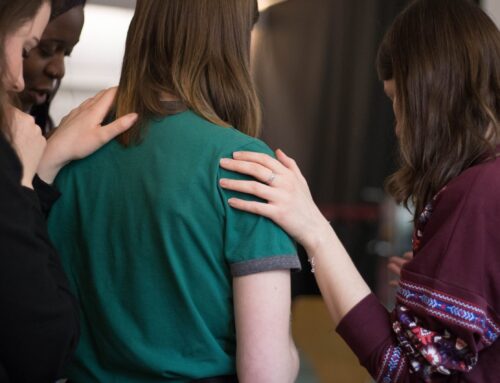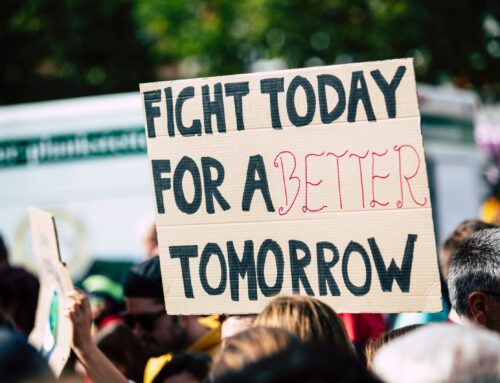 Most of us will not soon forget the two and a half years since March, 2020, when the pandemic of COVID-19 erupted. Millions of deaths and countless disruptions and sacrifices later, that pandemic is fading, softening, lightening its grip. Fears that it will resurface in the coming winter (and that COVID, influenza, and respiratory syncytial virus—RSV—will comprise a terrible trifecta, the “tripedemic”) are at least as warranted as are epidemiological reassurances that the combination of widespread vaccination and the probability that most Americans have already had one or another variant of COVID will prevent another surge. Annual revaccination, as is done for influenza, will be a small price to pay to avoid future harm.
Most of us will not soon forget the two and a half years since March, 2020, when the pandemic of COVID-19 erupted. Millions of deaths and countless disruptions and sacrifices later, that pandemic is fading, softening, lightening its grip. Fears that it will resurface in the coming winter (and that COVID, influenza, and respiratory syncytial virus—RSV—will comprise a terrible trifecta, the “tripedemic”) are at least as warranted as are epidemiological reassurances that the combination of widespread vaccination and the probability that most Americans have already had one or another variant of COVID will prevent another surge. Annual revaccination, as is done for influenza, will be a small price to pay to avoid future harm.
We emerge from 30 months of COVID with suddenly familiar adaptations of language—“Zoom fatigue,” “You’re on mute,” “vaxxed,” “boosted,” and “remote,” which is now used in new ways, as in “I’m remote today” (in which “remote” becomes a situation, not a personality trait, though some people can be simultaneously remote in both ways).
More important, we also emerge with scars from what was a truly multifactorial trauma; not the least of those is an edgy increase in the level of tension along the boundary between personal and public, or community, health.
In the experience of western healthcare, the patient/client is an individual who seeks care and services; in public health, the patient/client is the collective—the community of people. That community could be a whole population (such as college and university students, frail elderly people, or infants), a geographically defined community (like the city of Baltimore), or a college campus. Leave aside, for a moment, the important distinction between “health” and “healthcare”; the point is that public health has a very different intention and purpose. It seeks to improve health for each of us by focusing on all of us, together. Public health deals with patterns of illness or injury, the overall quality of health in a population or community, health equity, threats and risks to the community’s health, and ways to forestall or limit negative health outcomes. The primary tools of public health are systematic observations and reports of illness or injury, data analytics, and policy.
Prior to the pandemic (not that COVID was the first one), health in higher education mostly meant healthcare, delivered almost exclusively in-person by trained professional staff in student health and counseling services and centers. Despite national initiatives such as “Healthy Campus 2020” (ahem), institutions in general have allocated resources to clinical programs and services far more than to health promotion (which is only one part of the repertoire or public health); the more comprehensive concepts, responsibilities, and actions that are essential elements of public health were seldom employed and almost never emphasized.
In many ways, then, COVID-19 introduced public health methods, practices, and results to campuses for the first time.
In the process, students, faculty, and staff had to develop high tolerance for things that would otherwise have been utterly intolerable. For example, the application of the principles and strategies of public health led to “de-densification” or closure of many campuses, virtual teaching and learning, social distancing, extensive and often mandated testing of asymptomatic people, contact tracing, and forced quarantine and isolation in order to contain and reduce spread of the infection. Requirements for vaccines (and, on many campuses, boosters) included penalties, up to and including expulsion, for students or employees who did not comply. At the core of these practices were epidemiological analytics; everything depended on data, some of which were displayed on the nearly omnipresent “dashboards” installed on campus websites.
These requirements, mandates, and enforcement actions were unwelcome everywhere, tolerated in many places, and resisted for being unacceptable on some campuses and, eventually, in some states. Groups of students, parents, and other institutional constituents protested; administrators worried that disaffected students would dis-enroll, transfer elsewhere, or disrupt events and classes. These conflicts quickly became politically charged; resistance to COVID-related public health requirements spun up into claims and debates about personal liberty, freedom (sometimes including the academic variety), and self-determination. The elevation of personal choice over community wellbeing contained echoes of similar rhetoric from the early days of seat belt laws, smoking bans, and the legal drinking age. Note, incidentally and somewhat paradoxically, that institutions of higher education do not offer students a choice about paying tuition and fees, completing general education courses, or fulfilling degree requirements.
To the point about echoes of earlier debates: while COVID-19 is the public health challenge colleges and universities have most recently had to confront up close and personal, it is not the only one that differentially inhabits higher education; it is just the first public health challenge to create a widespread threat to health of sufficient scale and severity to warrant drastic measures. Some states, and many universities, also require that students be vaccinated for other infectious diseases (such as meningitis, measles, mumps, rubella, and, less often, influenza).
One might argue, though, that some of the other public health problems facing higher education (those that are not infectious diseases) could justify more forceful steps than have usually been taken. Take, for example, alcohol, and, in particular, the linkages between the excessive use of alcohol and other forms of risk, such as driving, fighting, and hazing. Hazing, in particular, is a completely unnecessary and unjustified practice that creates a significant risk to health and life, but it continues; at least one student has died as a result of hazing rituals in each of the last 20 years. Consider also sexual assault, and whether we, collectively, have done enough to make our campuses safe for all our students.
What about discrimination, hate, prejudice, and bias incidents? These attitudes and events can make classrooms, athletic fields, student centers, and residence halls feel unsafe for too many students. Living in an environment in which such incidents thrive will make if more difficult for students who are the targets of hatred and bias from feeling that they belong, flourishing, and succeeding.
How might a systemic, campus-wide approach, grounded in public health theory, better support a fully inclusive community?
And then there is mental health, which meets the most important criteria for a public health problem—it affects the overall well-being, capacity, and experience of a substantial proportion of the campus community, frequently causes distress among members of that community, influences their personal and professional success, and is closely related to the mission, purposes, and principles of the institution. Data from national surveys, counseling centers, and individual campuses confirm that demand for counseling and related mental health services continues to increase. The frequency of psychological distress due to anxiety has grown to well over a third of students—so much so that many college health professionals question the value of screening for it (“You can almost assume a student who comes to the health center has it”). Clinical services consume almost all of the human resources devoted to mental health—psychologists, counselors, psychiatrists, psychiatric nurse practitioners, primary care providers, case managers, and others. Demand management strategies, like stepped care, are designed to make the highest and best use of these limited resources. Too often, the “upstream” work—outreach, primary prevention, and strengthening mental health—is insufficiently developed, resourced, and executed.
A public health approach to mental health on campus (among faculty and staff as well as students), would require new institutional investments, and not just hiring more counselors.
Consistent, comprehensive mental health education (including recognizing symptoms and signs in yourself or others, and how to get, offer, and provide help), mental health outreach, and workshops and mini-courses in self-care and resiliency could form the foundation for culture change toward an ethic of care supported by well-being-oriented policies and practices—such as providing time for reflection, revised operational and academic schedules to reduce stress, and attention to advancing everyone’s sense of belonging and connectedness. Avid and ongoing data collection would inform assessments of programs and services and foster successive innovations. Customized support and prevention services would respond to the needs of under-represented and minoritized students.
All of this would simply put the two calls to action of the Okanagan Charter into active practice: first, “embedding health (in this case, mental health) into all aspects of campus culture, across the administration, operations, and academic mandates”; and second, “leading health promotion action and collaboration locally and globally.” Instantiating a systematic approach to mental health using public health principles would demonstrate that members of a thriving, flourishing university community care about and notice one another, and that there is much in “health” that is public.
Richard P. Keeling, MD, Chairman, wrote this essay for the Council for the Advancement of Standards in Higher Education (CAS) and presented it at their Council of Representatives meeting on November 14, 2022.
Keeling & Associates, LLC is a comprehensive higher education consulting and professional services firm that creates “change for learning” through its strategic planning, consultation, and executive search services across North America. Let’s create change for learning together.






Leave A Comment